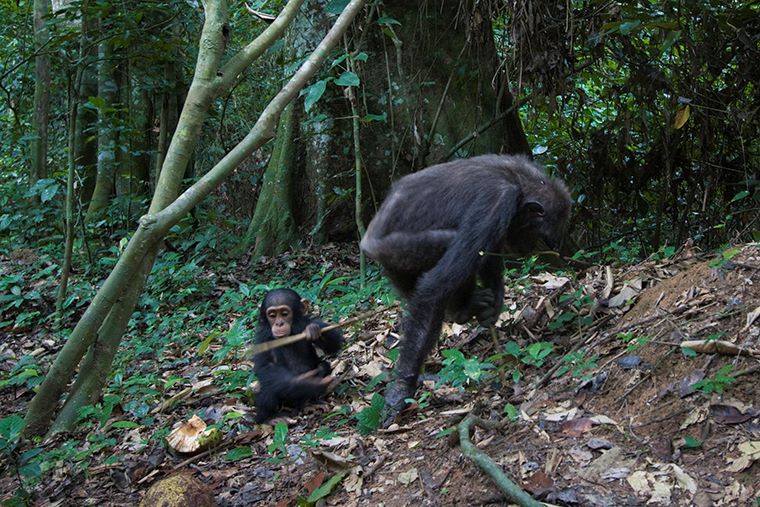[video] Sharing tools sheds light on learning and evolution. The case of chimpanzees
Teaching a chimpanzee to fish for insects isn't just about immediate sustenance; it could potentially influence the course of evolution.
Chimpanzees, our closest living relatives, display remarkable tool-using abilities in the wild. They learn to use tools not just for survival but also to gather essential nutrients. A key observation of a recent research by a cohort of academic institution highlights the transfer of tools among them during termite gathering, a crucial food source for these primates.
By doing so, the chimpanzees with knowledge also tend to show their fellows how to use the tools. Mothers are more active when it comes to their offspring.
Two distinct populations, different approaches
The research focuses on two distinct populations of wild chimpanzees: one residing in the Goualougo Triangle in the Republic of Congo and the other in Gombe, Tanzania. Both populations share the common task of termite gathering, but the complexity of their tool usage differs significantly.
In the Goualougo Triangle, chimpanzees employ a multi-step process involving various tool types, customized for greater efficiency. For example, they first dig a hole in the termite mound with a stronger stick, then fish for insects with a twig. In contrast, Gombe chimpanzees use simpler tools for the same task. This complexity has intriguing implications for the social dynamics of these two populations.

Chimpanzees in both locations use fishing-probe style tools to harvest termites, but Goualougo chimpanzees use multiple, different types of tools sequentially. They also make tools from specific plant species and customize fishing probes to improve their efficiency.
At Goualougo, where the fishing tasks were more complex, the rate of tool transfer was three times higher than at Gombe, and Goualougo mothers were more likely to transfer a tool in response to a request.
Further, mothers at Goualougo most often responded to tool requests by actively giving a tool to offspring.
Such active transfers were never observed at Gombe, where mothers most often responded by refusing to transfer tools. Given that offspring in both populations made comparable requests for tools, these differences suggest that mothers at Goualougo were in fact more willing to provide tools.
“Non-human primates are often thought to learn tool skills by watching others and practicing on their own, with little direct help from mothers or other expert tool users,” said Stephanie Musgrave, assistant professor of anthropology at the University of Miami, and first author of the study, in a press release published by her host institution.
Complexity prompts higher willingness for transfer
In Goualougo, where the termite-gathering task is more complex, tool transfer rates are three times higher compared to Gombe. Mothers at Goualougo are more likely to respond to tool requests by actively providing the tools, a behavior resembling teaching.
“First, chimpanzee populations may vary not only in the complexity of their tool behaviors but in the social mechanisms that support these behaviors. Second, the capacity for helping in chimpanzees may be both more robust and more flexible than previously appreciated. […] social learning may vary in relation to how challenging the task is: during tasks that are more difficult, mothers can in fact play a more active role, including behaviors that function to teach,” she explained further.
In the long run, tool using shapes the behavior of these primates and builds the connections within their community; the more complex the process - the hotter skill sharing.
Understanding how chimpanzee tool traditions are passed down through generations provides valuable insights into the evolutionary origins of complex cultural abilities in humans, Musgrave emphasized.
The study, which marks this year its 20th anniversary, highlights the chimpanzees' capacity for prosocial behavior, a quality with potential implications for understanding the evolution of human cultural abilities. It is a collaborative work of experts from Washington University, the University of Miami, and Franklin & Marshall College, as well as the wildlife organizations Wildlife Conservation Society and Jane Goodall Institute.
The study was published in the Proceedings of the National Academy of Sciences.
***
Feel free to support our small office: RO50BTRLEURCRT0490900501 (IBAN in euros), for Rudeana SRL-D (beneficiary in Romania).
Not feeling like donating? Then click on banners on our website to generate ad revenue. Any help is welcome.







